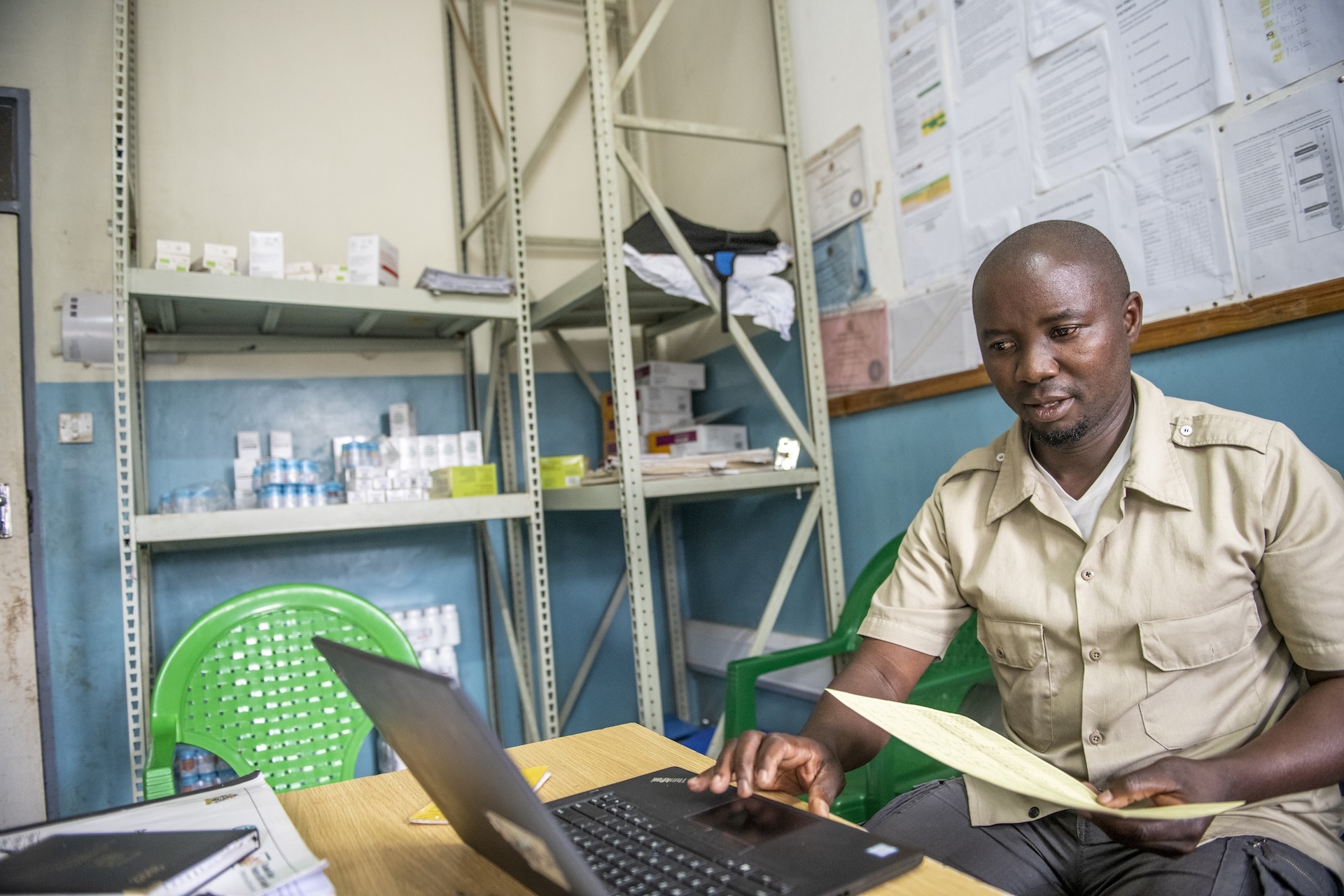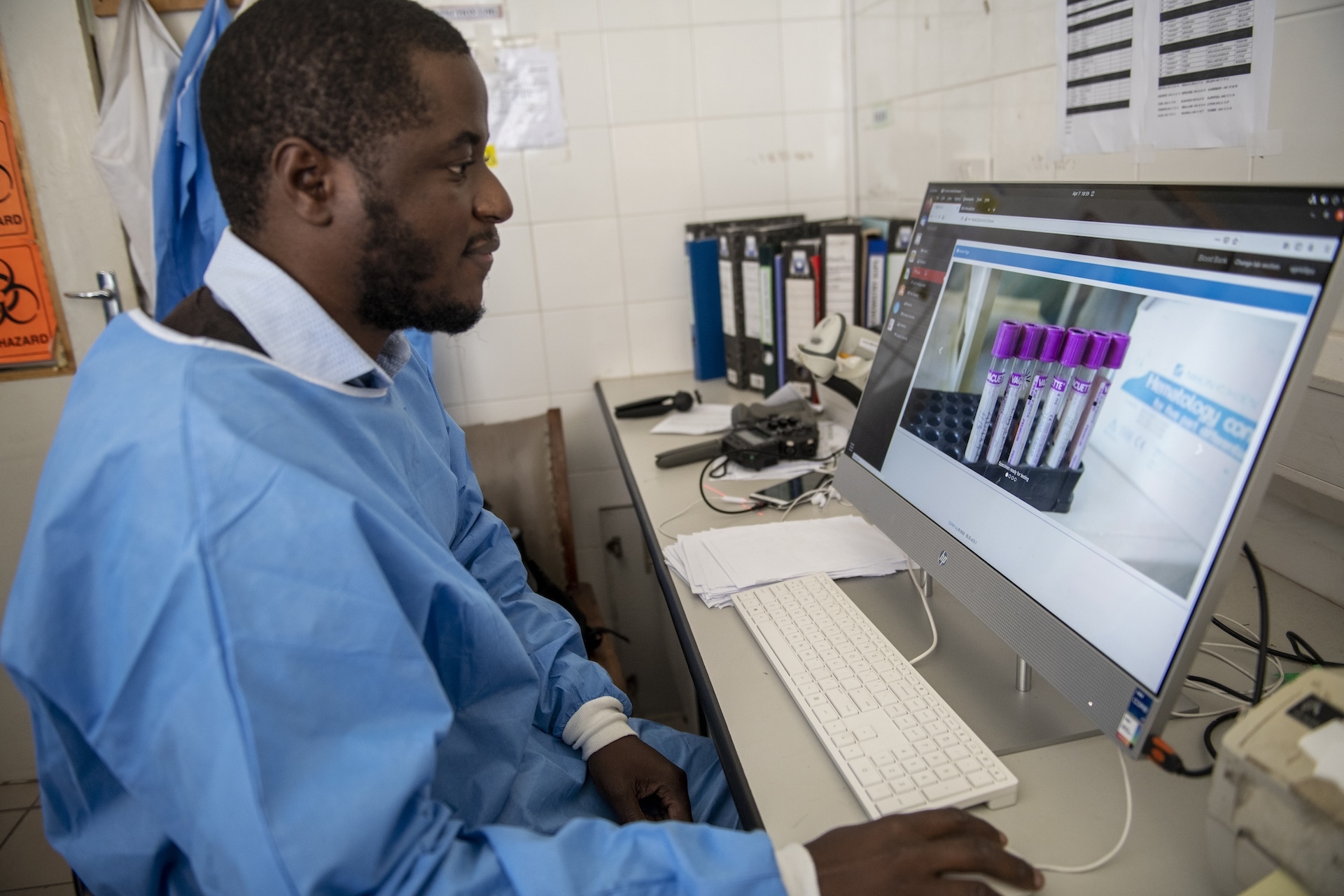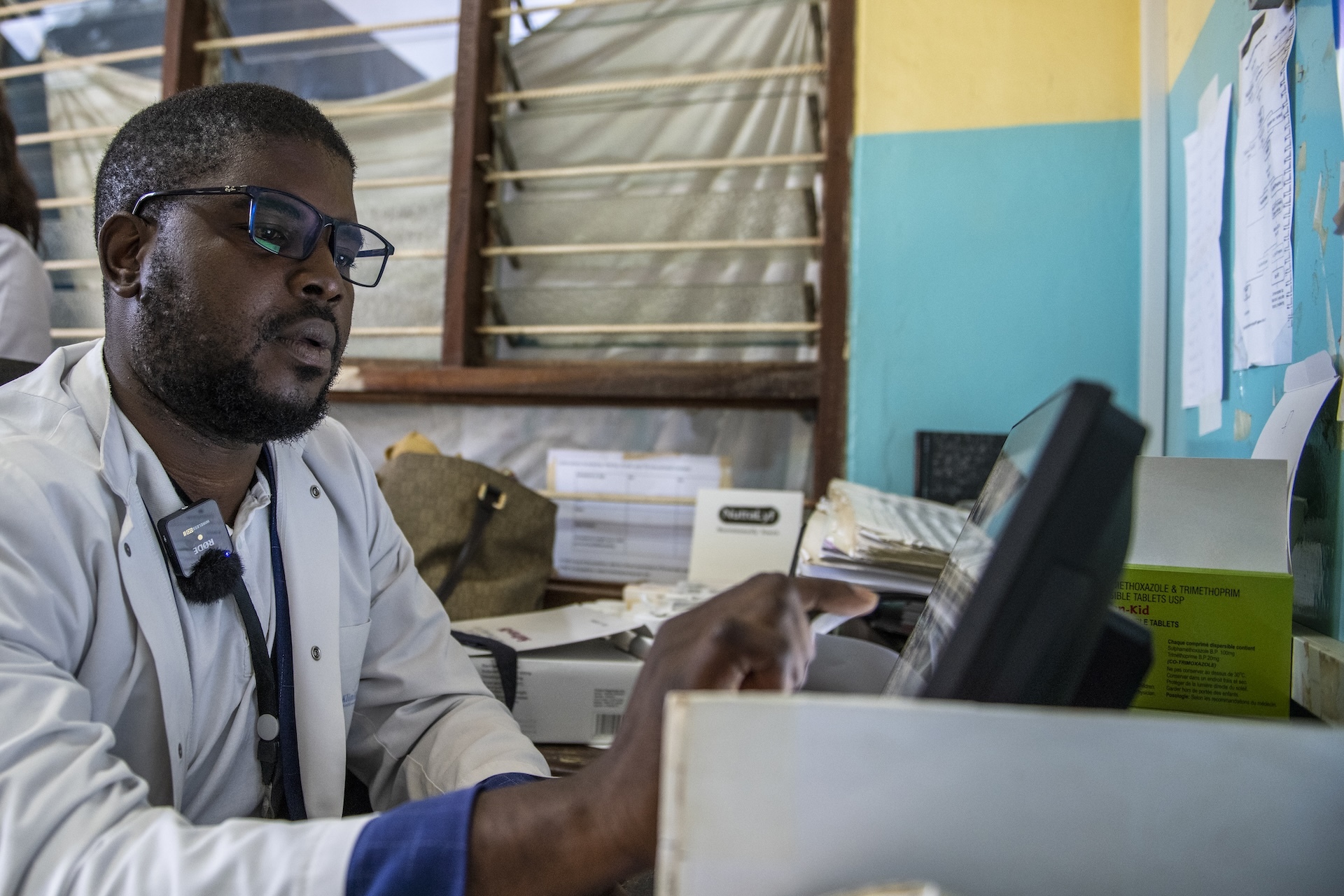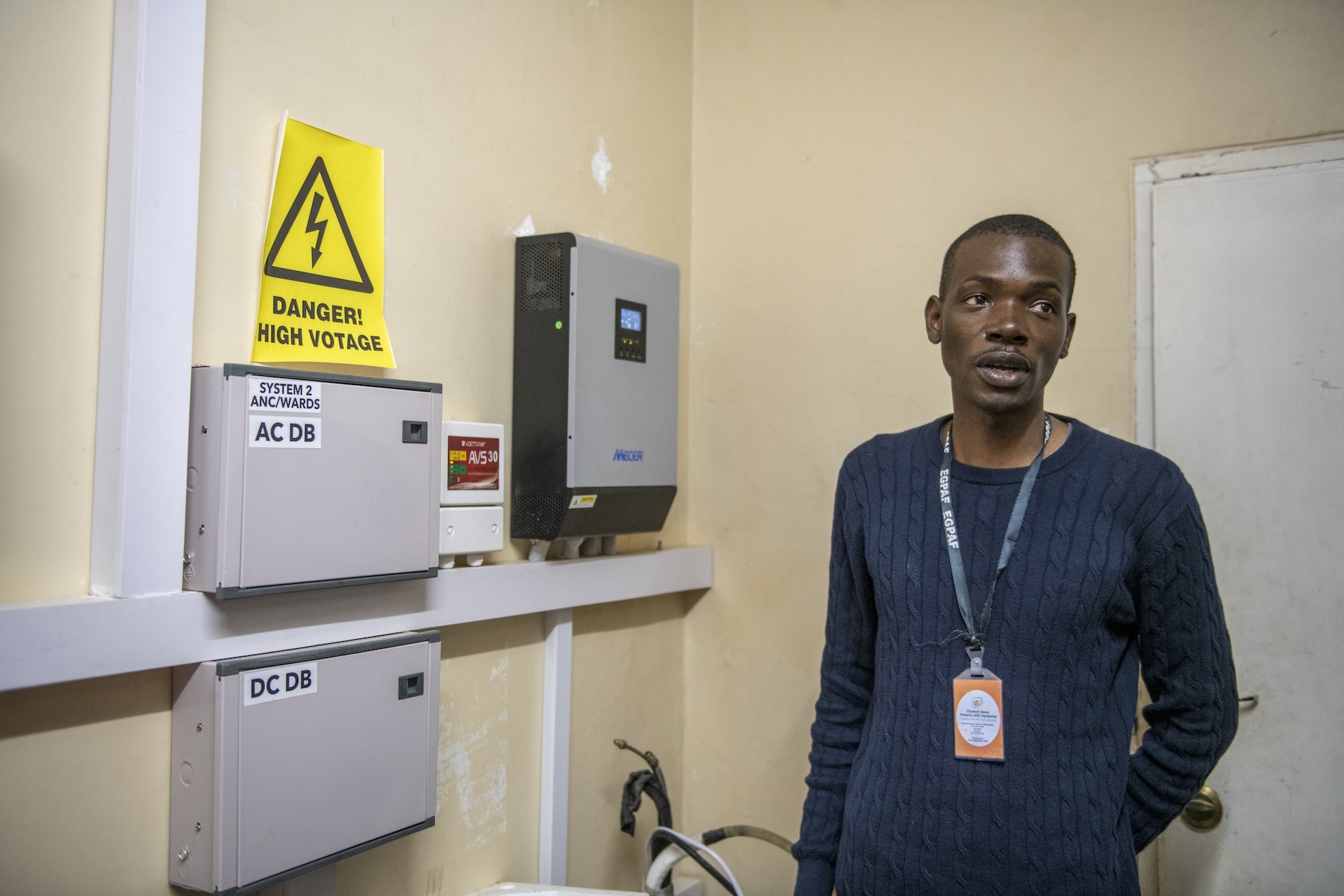Digital health systems leverage data to give providers a more holistic view of patient health and patients more control over their care. These tools improve medical outcomes and enhance efficiency at every level of the healthcare system.
Since 2004, the U.S. Centers for Disease Control (CDC), funded by the U.S. President’s Emergency Plan for AIDS Relief (PEPFAR), has supported the Malawi Ministry of Health (MOH) in building digital health systems and tools, including a sustainable point-of-care electronic medical records system (EMRS), retrospective data capture solutions, and other health information systems (HIS) to support quality HIV testing and antiretroviral therapy (ART) services.
PEPFAR’s investments in HIS have great potential for improving HIV epidemic control and patient outcomes in Malawi. As these systems become interoperable and integrated, collection and responsible use of comprehensive patient-level data will facilitate targeted responses to micro-epidemics and provide a pathway to sustainable epidemic control.
Since 2019, CDC and EGPAF have continued to sustain and improve these HIS investments to ensure digital health is optimized to both support patient care and to reach and sustain epidemic control. These efforts are modernizing the point-of-care and e-Mastercard systems to address the full cascade of HIV and TB care by aligning facility workflows. These enhancements provide a shared and more complete history of HIV and TB patients, allowing for better-informed clinical care and robust data to inform program implementation and epidemic control efforts. The following solutions have been employed:

Electronic Medical Records System
Malawi’s EMRS has been deployed in 758 clinics that provide antiretroviral therapy (ART) services: 254 point-of-care clinics and 504 e-Mastercard sites. The EMRS platform allows access to modules that providers use to capture and view patient care and treatment information in real time. EGPAF has developed specialized, interoperable modules for ART, HIV testing services, outpatient departments, antenatal care, and other points of care. The goal is to shift from back-entry stations to point-of-care solutions, with providers using platforms such as mobile phones, tablets, and web-based interfaces to access the EMRS and enter information about their patients.
To improve interoperability and integration across modules and systems, the project prioritizes the modernization and enhancement of the module-based approach, ensuring different entry points and systems are in sync and able to exchange information.

Lab Information Management Systems
The national lab information management systems (LIMS) is designed to support and improve efficiency and productivity of laboratories by keeping track of data associated with samples, tests, quality assurance and control results, as well as workflows, inventory, and instruments. EGPAF supports the MOH Department of Diagnostics with development, deployment, and maintenance of the national LIMS. As part of this support, EGPAF has fostered an integration of the point-of-care electronic medical records, Early Infant Diagnostics (EID), and the National Laboratory Systems. This integration has enhanced tracking of results, improved turnaround time, allowed clinicians to access results in real time, and has increased the availability of high-quality data for management of patients and labs.

Data Lake System
EGPAF supports the MOH Department of HIV and AIDS in the management and maintenance of the Central Data Repository to serve as a centralized, interoperable data hub for HIV programs and patient data. This repository, also known as the Data Lake, is designed to collect, consolidate, and manage large volumes of data from various sources such as the EMRS and the LIMS. It provides a unified data analytics platform that facilitates data modeling, manipulation, and visualization of key program indicators that supports the MOH and stakeholders in discovering useful insights to guide decision-making to improve patient care and health services delivery.

Civil Registration and Vital Statistics Systems
EGPAF supports the National Registration Bureau (NRB) in developing and deploying an electronic system for birth and death registration. As of June 2024, an upgraded, centralized Civil Registration and Vital Statistics System (CRVS) is operational in 28 district registration offices, 28 district hospitals, and three central hospitals. The system is fully integrated with Malawi’s National ID System and has reduced the turnaround time for printing certificates to within five minutes. This advancement allows certificates to be printed at the hospital, enabling mothers to collect their children’s birth certificates upon discharge from the maternity ward. Currently, EGPAF has installed printers in five district hospitals that print certificates on-site.
The system also registers deaths from hospitals and communities, allowing the assignment of causes of death through the Medical Certification of Cause of Death or the WHO verbal autopsy tool. EGPAF is also supporting the NRB in decentralizing the use of and access to the system in clinics and in developing and using dashboards to inform national planning needs. Additionally, EGPAF plans to expand the CRVS system to 100 health facilities by the end of 2024.
Services

Developing and Deploying Software
The EGPAF software development team works closely with users to ensure new functionality and ongoing system efficiency. A dedicated development and operations (DevOps) team focuses on national-scale deployment via automatic deployment pipelines.
National Helpdesk and Decentralized User Support
To provide efficient support services, EGPAF has developed the National Helpdesk, reachable by a tollfree number, email, and self-service (via system portal). The helpdesk uses a ManageEngine tool to manage all requests from users in all health facilities. The helpdesk aims for a quick response time to standard site issues, ensuring no more than 24 hours of downtime.
Enabling Connectivity
EGPAF leverages technological and market advancements to invest in site-level local area networks (LAN) and above site-level through a wide area network (WAN) connectivity infrastructure, allowing for real-time connectivity within sites, across systems, and across geo-locations. EGPAF in partnership with Telecom Networks Malawi and AIRTEL provides virtual private network (VPN) connections to all clinics and labs, allowing for real-time transfer and back up of data.
Ensure Robust and Reliable Hardware, Power Infrastructure
As health information systems become integral to service delivery and operations, proportional investments in hardware, computing capacity, and power backups will be required. EGPAF will continue to procure and deploy CDC/MOH-approved upgrades to all infrastructure, such as point-of-care terminals, mobile devices, and barcode scanners.



